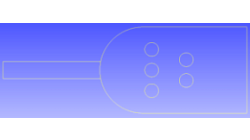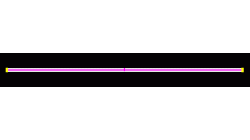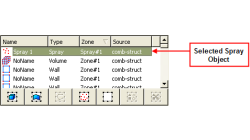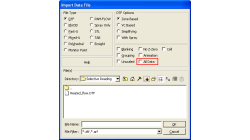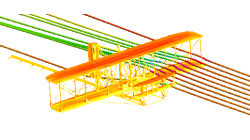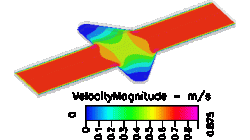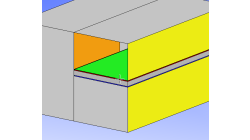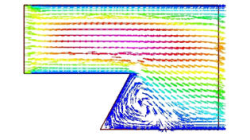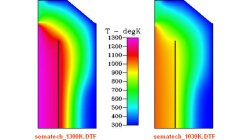- Home
- Resources
- Tips & Tricks
Tips & Tricks
Mixing Structured and Unstructured 2D Grids
One of the most common questions that occurs during CFD-GEOM Training sessions is "How do I generate mixed structured and unstructured grids?" Both grid types have their specific advantages and disadvantages, e.g. structured grids are very efficient in resolving the viscous terms, whereas unstructured grids can be used to handle complex geometries.
Abraham
Meganathan
CFD
Using "Visual Scaling" for Models with Drastically Varying Length Scales
For models that have drastically varying length scales, it can be difficult to create the grid, setup a model, and post-process the results. CFD-GEOM, CFD-ACE-GUI and CFD-VIEW have a "Visual Scale" capability that can significantly help when working with these types of models.
Abraham
Meganathan
CFD
Using the "Extra Variable" in CFD-VIEW
In CFD-VIEW, the Extra Variable list that appears in the Attribute toolbar is used for different purposes depending on the object type. If you are interested in knowing more about this feature, please read on.
Abraham
Meganathan
CFD
Selective Reading for DTF import in CFD-VIEW
When managing a model with complex geometry and/or physics, have you ever wondered how you could simplify the post-processing? You can do it easily using the selective reading capability in CFD-VIEW.
Abraham
Meganathan
CFD
Using the Clone Feature in CFD-VIEW
As the name suggests, the Clone operator creates an exact copy of the input object. The input object could be a surface (iso-surface, plane cut, geometry surface, border object) or a volume. The drawing style of this copy (or copies) is completely independent from that of the original.
Abraham
Meganathan
CFD
Using the Particle Trace Feature in CFD-VIEW
You can use the Particle Trace option in CFD-VIEW to enhance your flow visualization presentations. The use of this feature allows the display of more than one streamline and can be used in one, two, or three directions (but normally used in one or two directions).
Abraham
Meganathan
CFD
Mirroring Tool in CFD-VIEW
One should always take advantage of geometric and solution symmetry to model just one-half or one-fourth of the computational domain to reduce the computational time by significantly reducing the size of the model. After modeling half or one fourth of the model, you always want to present data for the full model.
Abraham
Meganathan
CFD
CFD-VIEW re-pick buffer feature for object selection
When post-processing complex geometries in CFD-VIEW where there are multiple objects close to each other, it is not always easy to pick the correct one, unless you zoom in a lot. To avoid having to zoom in and zoom out many times, you can use the re-pick buffer feature.
Abraham
Meganathan
CFD
Point Net Feature in CFD-VIEW
A Point Net is primarily used for creating an evenly spaced vector field over existing 3D volumes, 2D surfaces (if the domain is two-dimensional), or cutting planes. The Point Net creates a set of points over the selected entity, and the simulation variable values (such as pressure, temperature, etc.) at these points are derived by interpolation on the underlying mesh.
Abraham
Meganathan
CFD
Importing Multiple DTF Files into a Single Viewer in CFD-VIEW
In certain situations, it may be useful to view multiple DTF files in one viewer in CFD-VIEW. Some reasons could be that parametric studies have been performed on the geometry or you would like to view two different results for the same model, i.e. look at flow velocity and pressure simultaneously.
Abraham
Meganathan
CFD
